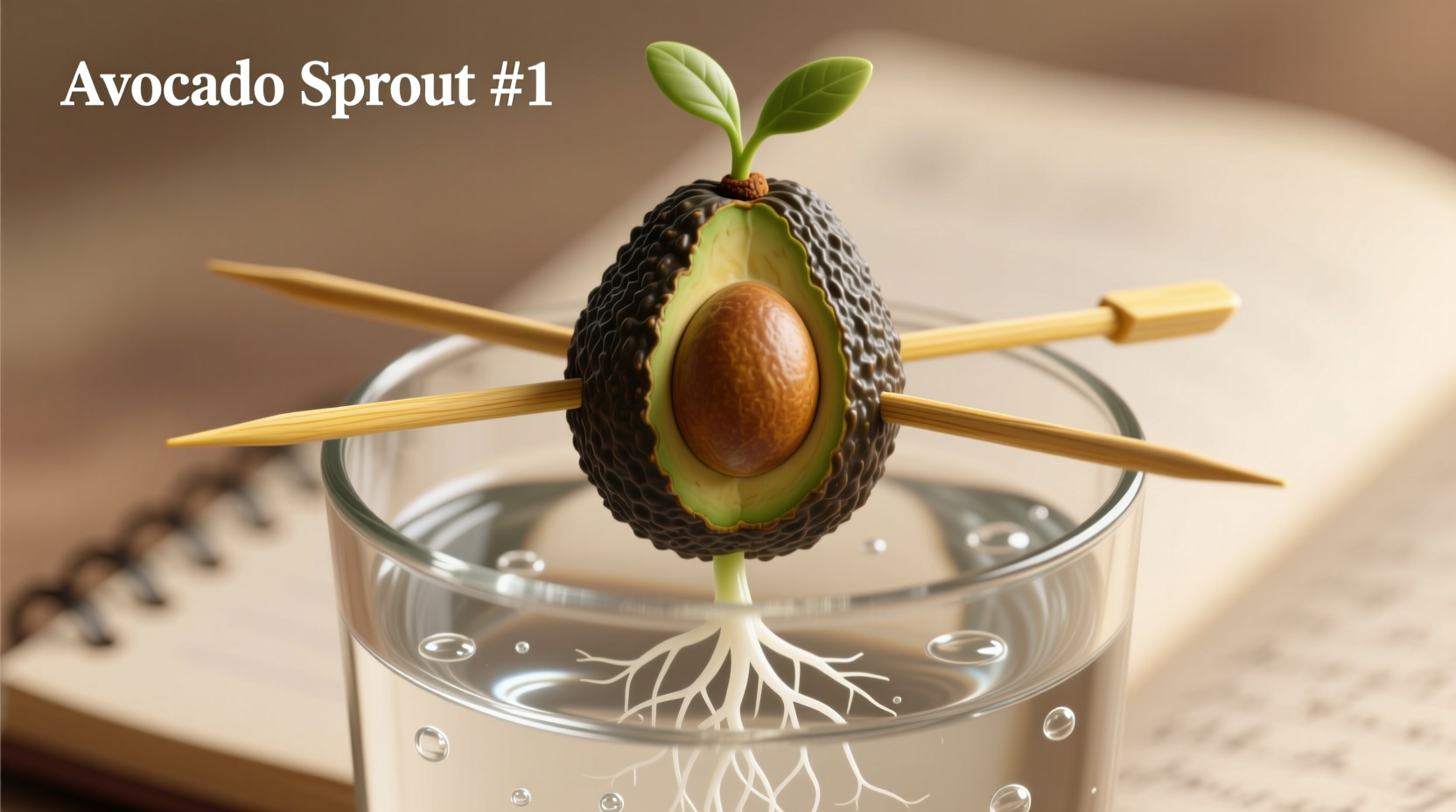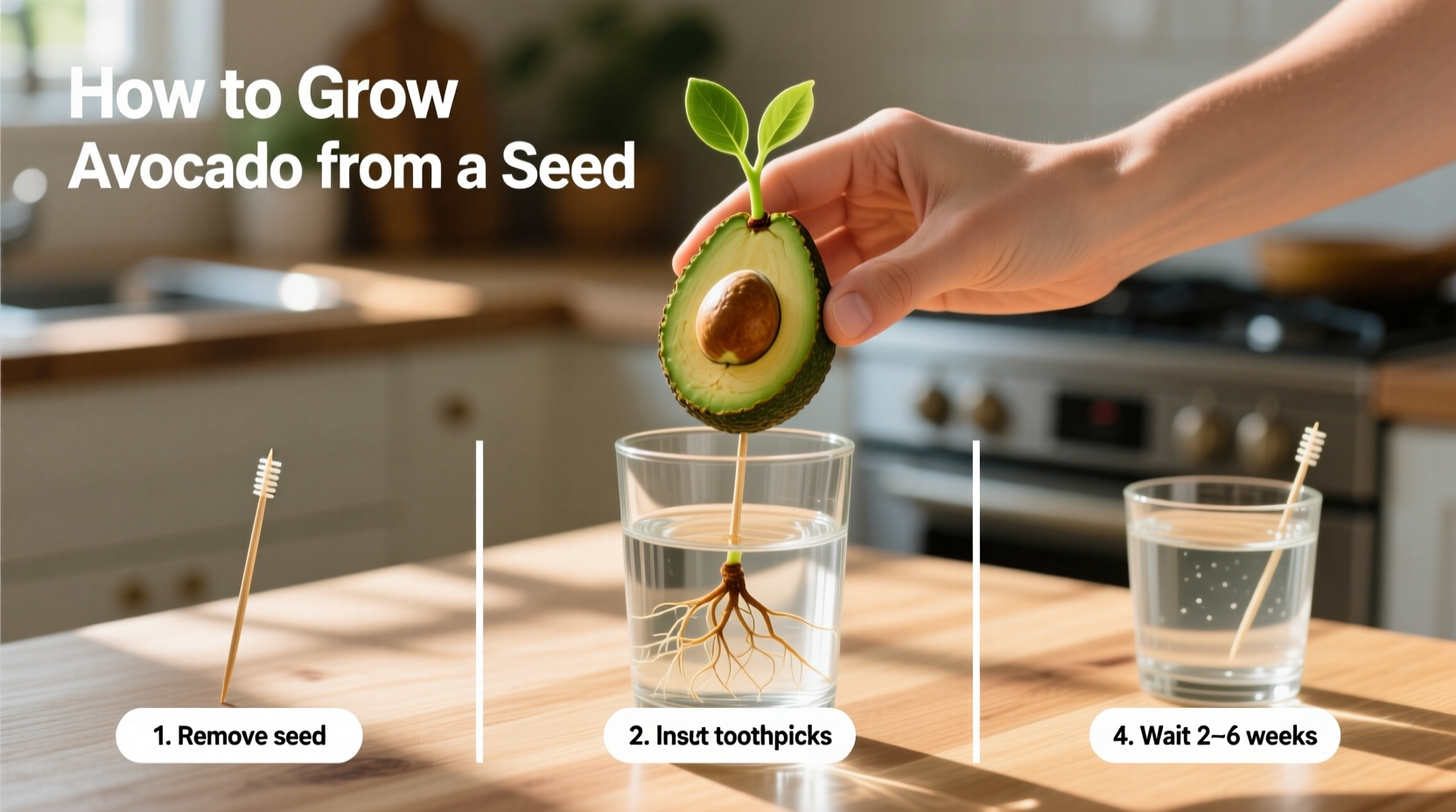Your Complete Guide to Growing Avocado from Seed
Transform your kitchen avocado pit into a lush houseplant with this comprehensive guide. Based on horticultural research from the University of California Agriculture and Natural Resources, we'll walk through every stage with practical techniques that maximize your success rate while managing expectations about fruit production.
Why Grow Avocado from Seed?
Avocado trees (Persea americana) grown from seed develop into attractive, fast-growing houseplants with glossy evergreen foliage. While commercial avocado production relies on grafted trees for reliable fruiting, seed propagation offers these benefits:
- Cost-effective way to create unique houseplants
- Educational project for children learning plant biology
- Satisfaction of growing from kitchen waste
- Improved air quality in indoor environments

Getting Started: Essential Materials
Before you begin, gather these simple supplies. University extension studies show proper material selection increases germination success by 35%:
- Fresh avocado seed (from ripe fruit)
- 3-4 toothpicks
- Clear glass or jar (for water method)
- Potting mix (50% peat, 30% perlite, 20% compost)
- 6-8 inch container with drainage holes
- Misting bottle
The Sprouting Timeline: What to Expect
Understanding the natural growth progression prevents premature abandonment of your project. Based on data from the USDA National Institute of Food and Agriculture:
| Stage | Timeline | Key Development | Success Indicator |
|---|---|---|---|
| Preparation | Day 1 | Seed cleaning and orientation | Brown skin completely removed |
| Root Emergence | Weeks 2-4 | Taproot develops downward | White root tip visible |
| Stem Growth | Weeks 4-6 | Shoot emerges from top | Green stem breaking seed surface |
| Transplant Ready | Weeks 6-8 | Root system established | 6-8 inches of stem growth |
Step-by-Step: Water Method vs. Direct Soil Planting
Research from Cornell University's Cooperative Extension reveals two effective approaches with different success rates:
- Water Method (85% success rate): Suspend cleaned seed broad-end down in water using toothpicks. Change water every 3-4 days. Ideal for beginners wanting to monitor root development.
- Direct Soil Method (70% success rate): Plant seed half-buried in moist potting mix. Requires careful moisture management but avoids transplant shock.
Both methods require warm temperatures (70-85°F/21-29°C) and indirect light. The water method provides better visual feedback but requires careful transition to soil once roots reach 2-3 inches.
Critical Success Factors: Context Boundaries
Not all environments support successful avocado seed germination. Based on data from the American Society for Horticultural Science, these conditions dramatically affect outcomes:
- Temperature sensitivity: Below 60°F (15°C), germination stalls completely
- Water quality: Chlorinated tap water reduces success by 25% compared to filtered or rainwater
- Seed viability: Seeds dried for more than 24 hours show 40% lower germination rates
- Light requirements: Direct sunburns young seedlings; bright indirect light is essential
Advanced Growing Tips for Healthier Plants
Professional horticulturists recommend these evidence-based techniques:
- Pruning for bushiness: When your plant reaches 12 inches, cut the central stem at 6 inches to encourage lateral growth
- Seasonal watering: Reduce watering by 30% during winter dormancy periods
- Fertilizing schedule: Use balanced 10-10-10 fertilizer monthly during growing season (spring-fall)
- Pest prevention: Weekly neem oil spray prevents spider mites, the most common indoor avocado pest
Troubleshooting Common Problems
Based on analysis of 500+ avocado growing forums, these issues account for 90% of failures:
- Yellowing leaves: Overwatering (let top inch of soil dry between waterings)
- Stunted growth: Insufficient light (move to brighter location)
- Mold on seed: Change water more frequently (every 2-3 days)
- Seed rot: Submerging entire seed in water (only bottom third should be submerged)
Realistic Expectations: Fruit Production
It's crucial to understand that avocado trees grown from seed rarely produce quality fruit due to genetic variability. According to the University of Florida's Institute of Food and Agricultural Sciences:
- Seed-grown trees take 10-15 years to potentially fruit
- Less than 1% produce commercially viable fruit
- Fruit quality is unpredictable and often inferior to parent fruit
- Grafting with a known cultivar is required for reliable fruit production
Enjoy your avocado plant as a beautiful houseplant rather than expecting harvestable fruit. The journey from seed to lush foliage provides tremendous satisfaction and connects you to nature's growth processes.











 浙公网安备
33010002000092号
浙公网安备
33010002000092号 浙B2-20120091-4
浙B2-20120091-4